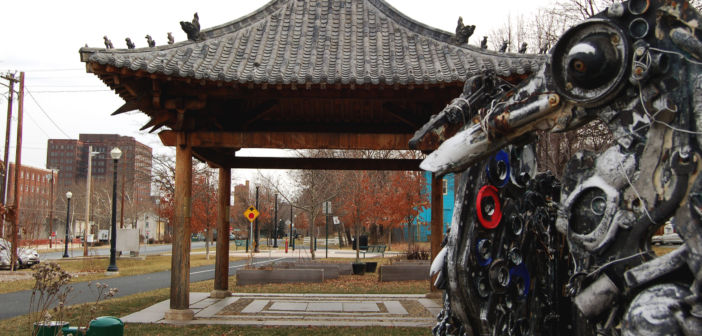The Bethlehem City Council has proposed a new eight-step legislative plan that will get the residents of Bethlehem more involved in local government.
Bethlehem City Council president J. William Reynolds proposed the plan, titled Bethlehem 2017, during a press conference on Jan. 10.
“We can really be the model of a progressive city if we take advantage of the opportunities before us,” Reynolds said. “We can move forward in a way that develops our neighborhoods, makes our government more open and transparent and generally a more progressive tone on what our city can be.”
The Bethlehem 2017 legislature consists of eight different initiatives: getting the local government on social media, becoming an open-data city, developing Bethlehem economic incentives, improving North Side neighborhoods, reinvesting Bethlehem Parking Authority funds into beautification, financial accountability incentive reporting, limiting campaign contributions and studying community policing.
One of Bethlehem 2017’s major goals is the focus on providing an easier connection between local government and citizens through an increased use of social media among Bethlehem government officials.
“A lot of our goals can be accomplished if people are working together on a local level,” Reynolds said.
Reynolds proposed the idea of having a social media team who can address the issues that the citizens of Bethlehem have. From there, the team can start communicating with the residents to find a solution.
“They’re having conversations online,” said George Wacker, the founder of the blog Lehigh Valley with Love. “That’s great because that shows that you are using social media in the city of Bethlehem and you are getting answers. I definitely think that’s something citizens can get behind.”
Wacker said Facebook and Twitter would be the best way for the Bethlehem government to maximize its communications with the public.
Wacker said Bethlehem has used social media to communicate in the past. Former Bethlehem Police Chief Jason Schiffer used social media so the police department could become more transparent, more progressive and more connected.
“He had a lot of success using social media to interact the public,” Wacker said.
Wacker said Bethlehem’s Department of Parks and Recreation uses Twitter and Facebook to communicate with the public and provide them with event information.
“It all comes down to people actually coming through,” Wacker said. “And that if both the government officials and residents do not actually use the social media as a gateway for communication, then the idea will fail.”
Another major factor is using open data to create a more transparent government. Reynolds plans on creating what he is calling “open Bethlehem” by creating a website that will display what the Bethlehem government is currently working on. This will allow for Bethlehem citizens to see what the government is succeeding at and what they still need to work on.
Reynolds said cities that are undergoing a process similar to that of Bethlehem have called upon local college students to help in their own progressive movements. Reynolds said he is happy to have both Lehigh University and Moravian College to help.
“As far as what’s affecting Lehigh locally, I can definitely see students being involved in that,” said Jenna Casciano from Lehigh’s Center for Community Engagement.
Casciano described open data as a good way for Lehigh community members to see some of the issues Bethlehem has. It can be further used as a gateway for students to help solve some of Bethlehem’s problems.
“One of the good things is that most of these ideas are either funding neutral or will not necessarily put any kind of strain on the budget,” Reynolds said.
The open data will also provide information on Bethlehem’s economic standing. This will help with Bethlehem’s initiative to create more economic incentives by allowing for people to see where Bethlehem is succeeding and failing economically.
Reynolds said some of the initiatives do involve funding, but the funding will come from tax incentives. An example of this would be the North Side 2025 initiative, which involves the beautification and refurbishment of North Side neighborhoods.
The first initiative of the Bethlehem 2017 program will be decided Feb. 7 as to whether or not Reynolds’ climate action plans will be employed.
This will be followed up in the next council meeting on Feb. 21 with a vote on the next two initiatives. These programs, which together are known as Engaging Bethlehem, would involve the social media and open data aspects of Bethlehem 2017.






Comment policy
Comments posted to The Brown and White website are reviewed by a moderator before being approved. Incendiary speech or harassing language, including comments targeted at individuals, may be deemed unacceptable and not published. Spam and other soliciting will also be declined.
The Brown and White also reserves the right to not publish entirely anonymous comments.